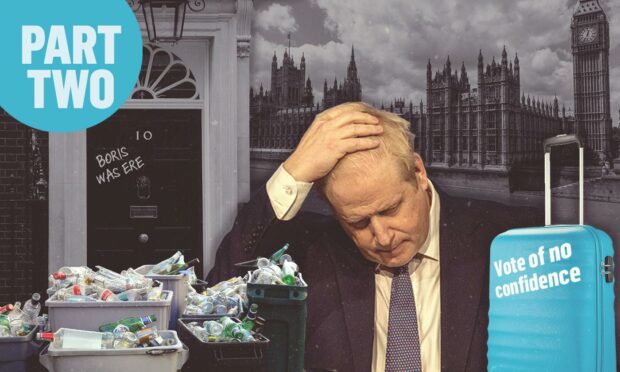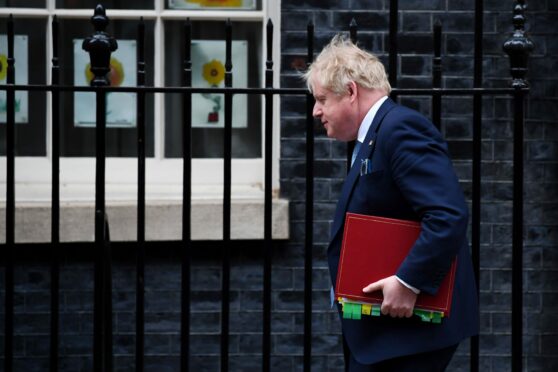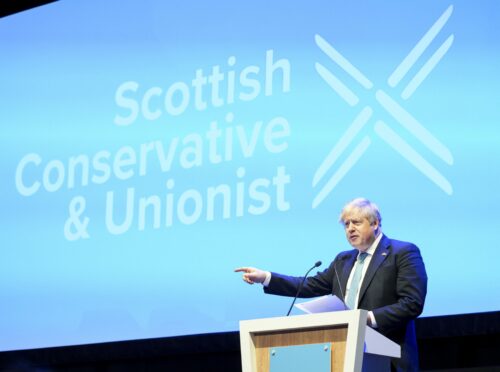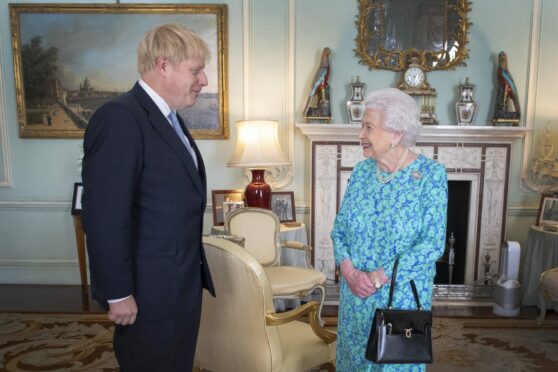It seems everywhere you look people are calling for Boris Johnson to step down as prime minister.
The Tory leader, along with his wife Carrie and Chancellor Rishi Sunak, have all now apologised after the Met Police fined them over the partygate scandal.
We set out earlier this year the options politicians had in front of them for removing Mr Johnson from office when his rule breaking first came to light.
But the prime minister clung on and following the outbreak of war in Ukraine, many Conservatives now argue it would be wrong to try to bring in a new leader.
It’s not easy to get rid of a prime minister who doesn’t want to go – so just how do you sack a Tory PM who broke the law?
Vote of no confidence
A vote of no confidence is a way of testing whether the prime minister and his cabinet still has the support of the House of Commons.
If the government loses the vote, it has 14 days to try to win back the confidence of MPs through another vote but opposition parties can try to form their own alternative government.
After a fortnight if no resolution is found an election is automatically called.
Some may be keen to avoid an election happening while the war in Ukraine is ongoing.
MPs do tend to vote along party lines during a confidence vote and given Mr Johnson has a working majority of about 80, it is unlikely this will topple the prime minister.
Liberal Democrat leader Sir Ed Davey has said parliament must be recalled so there can be a vote of no confidence in the prime minister.
Labour have not yet said whether they would call for a vote of confidence as well.
Send for the men in grey suits
MPs in the Conservative party can submit a letter of no confidence to the 1922 committee if they feel it is time for the prime minister to stand down.
The 1922 committee is an influential group of Tory backbenchers.
It’s often referred to as sending in the men in grey suits, which came into popular use following the resignation of Margaret Thatcher in 1990.
The rules state a total of 54 letters of no confidence would have to be submitted to the committee’s chairman Sir Graham Brady for a vote to be held.
If the prime minister lost that majority poll, a leadership contest would be triggered, with Mr Johnson unable to run as a candidate.
This could be a risky tactic as if Mr Johnson survives the vote, he would be granted a 12-month reprieve from any future party no confidence votes.
A number of Conservatives withdrew their letters of no confidence when Russia invaded Ukraine, perhaps most notably Scottish Conservative leader Douglas Ross.
Speaking after the prime minister received his fine, Mr Ross said: “It wouldn’t be right to remove the prime minister at this time.
“It would destabilise the UK Government when we need to be united in the face of Russian aggression and the murdering of innocent Ukrainians.”
The Tory pressure valve
The Conservative Party likes to win elections.
Many MPs who were not necessarily fans of Mr Johnson were prepared to back him as leader when he appeared popular with voters.
But his approval ratings have plummeted – latest polling shows more than half of UK voters want to see the back of him.
Even those who voted Leave and wanted Mr Johnson in the top job to ‘get Brexit done’ have turned on the prime minister.
With an election coming up in less than a month’s time, could the party look to drop him to save face?
Could the Queen sack him?
The last time a prime minister was removed on a monarch’s own authority in the UK was in 1834.
Experts are split on whether the Queen would have the powers to do this today.
It was reported in 2019 that the Queen asked aides for clarification on when and how a prime minister could be dismissed after a court hearing ruled Mr Johnson had unlawfully prorogued parliament.
Professor Robert Hazell from University College London argued it may be possible but only if the prime minister refused to step down after losing a vote of no confidence – something that is highly unlikely.
What happens next?
If Mr Johnson does step down, it does not necessarily mean he will immediately quit as prime minister.
Tory MPs would hold a contest to choose a new leader – and therefore a new prime minister – without an election.
When Theresa May resigned as Tory leader in 2019 she remained caretaker prime minister until her successor was chosen.
If Mr Johnson took the extreme step of resigning before a successor is chosen, the cabinet manual says it is “for the party or parties in government to identify who can be chosen as the successor”.
This could mean Deputy Prime Minister Dominic Raab, who stood in for Mr Johnson when he was ill with coronavirus, being given the top job again on a temporary basis.
However, there is no clear successor – up until last week Chancellor Rishi Sunak looked to be a shoo-in.
But that is now looking unlikely after his wife’s non-dom status revealed she avoided paying around £2 million in tax, his US green card status was revealed, and after Mr Sunak himself was fined by the Met Police for attending a lockdown gathering.
The bookies are now putting Foreign Secretary Liz Truss as the best choice.
Opposition parties would likely push for a general election, but this is probably something the Conservatives would want to avoid at all costs.



